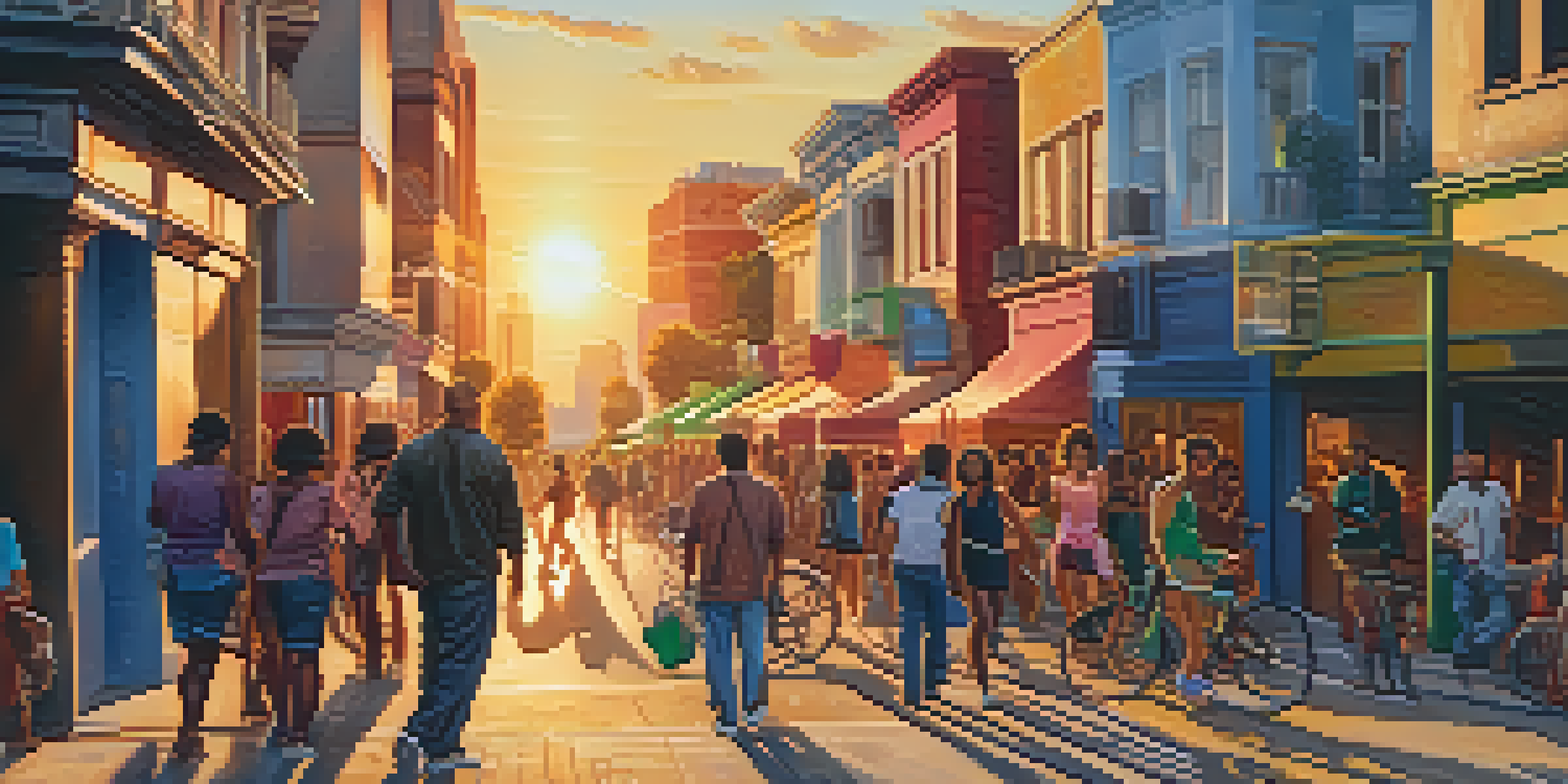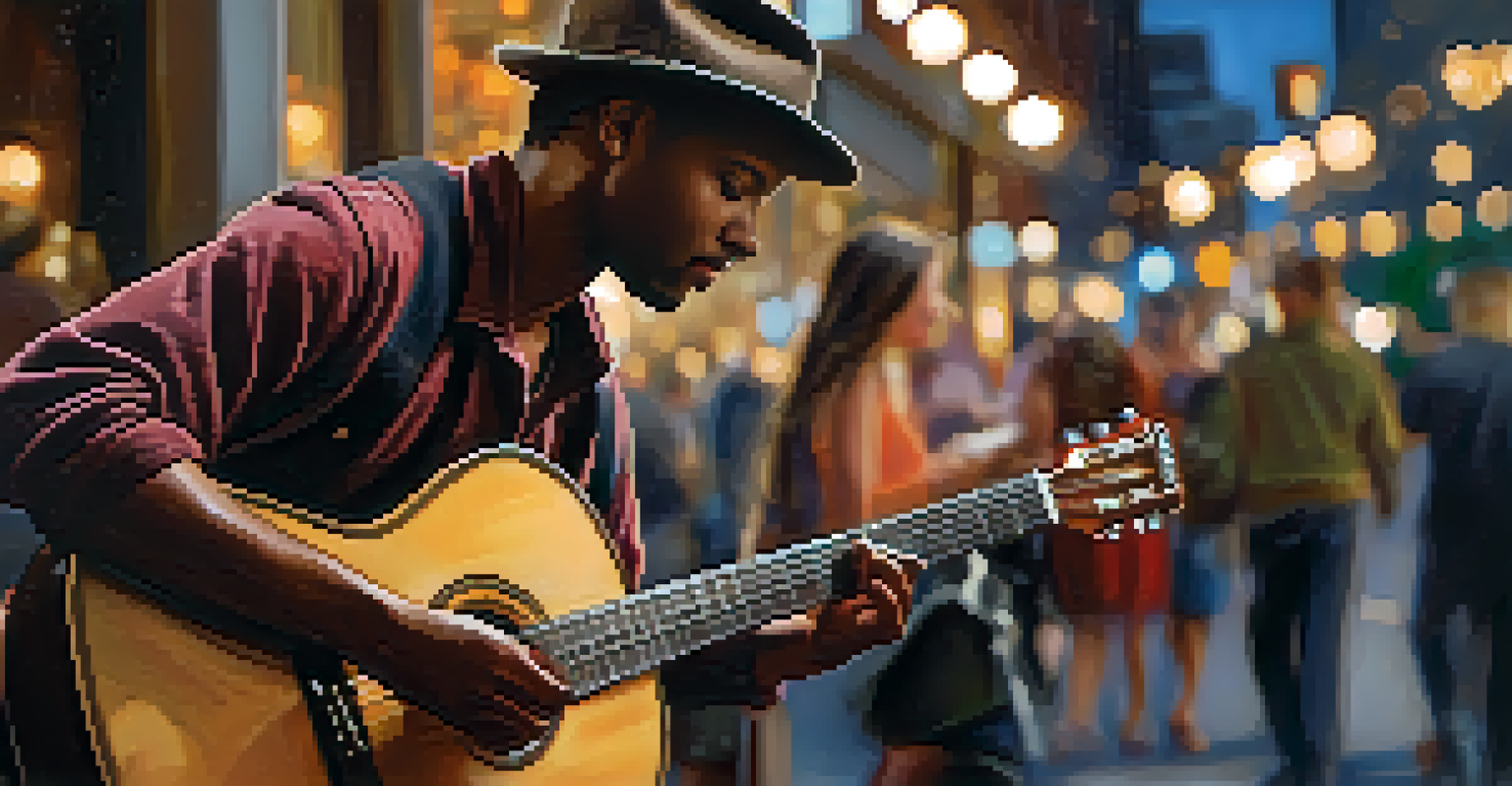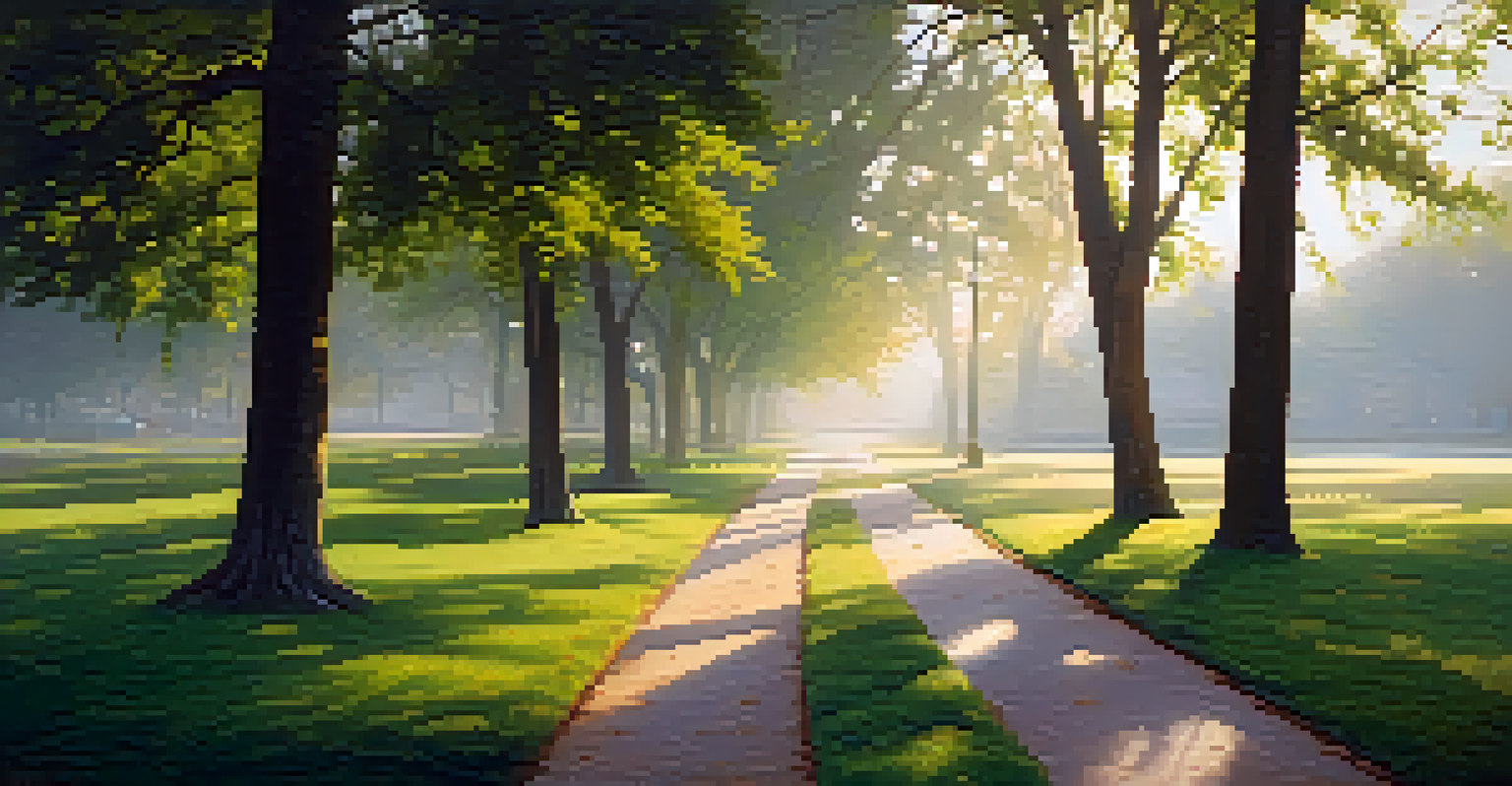The Influence of Social Media on Contemporary Street Photography

The Rise of Street Photography in the Digital Age
Street photography has transformed significantly with the advent of digital technology. In the past, photographers relied on film, which limited the number of shots and required careful planning. Today, digital cameras and smartphones allow for spontaneous captures, making it easier to document everyday life in urban settings.
Photography is the story I fail to put into words.
This shift has democratized street photography, enabling more individuals to participate and share their perspectives. Social media platforms like Instagram and Twitter serve as virtual galleries, allowing photographers to showcase their work to a global audience. As a result, we see a rich tapestry of styles and stories emerging from diverse voices.
Moreover, the immediacy of social media encourages photographers to experiment with their craft. They can quickly receive feedback on their work, refine their techniques, and connect with other artists. This vibrant exchange fosters a sense of community that is vital in nurturing new talent and fresh ideas.
The Role of Social Media in Shaping Trends
Social media platforms act as catalysts for trends in street photography. With thousands of users sharing images daily, certain styles or themes can gain traction rapidly. For instance, the rise of minimalism in street photography can often be traced back to viral posts that resonate with a wide audience.

Additionally, hashtags play a crucial role in categorizing and spreading these trends. Photographers can easily discover popular movements, like 'urban exploration' or 'candid moments,' by searching relevant hashtags. This not only inspires creativity but also helps photographers stay relevant in a fast-paced digital landscape.
Digital Tech Transforms Street Photography
The shift from film to digital technology has democratized street photography, allowing more people to spontaneously capture and share urban life.
However, the influence of trends can be a double-edged sword. While they can inspire new ideas, they can also lead to oversaturation, where many photographers mimic popular styles. This pressure to conform can stifle individuality, making it essential for artists to find their unique voice amidst the noise.
Building a Community Through Social Media
One of the most significant benefits of social media is the ability to build a community. Photographers can connect with others who share similar interests, exchange tips, and collaborate on projects. This sense of belonging can be incredibly motivating, especially for those who may feel isolated in their artistic pursuits.
In street photography, the world is your canvas, and every moment is a brushstroke waiting to be captured.
Online groups and forums dedicated to street photography provide a platform for sharing experiences and learning from one another. Photographers can post their images for critique, ask for advice on technique, or even discuss the philosophical aspects of capturing candid moments. This exchange of knowledge fosters a nurturing environment that can help artists grow.
Moreover, social media allows for the celebration of diverse narratives and perspectives. By following photographers from different backgrounds, one can gain insights into various cultures and lifestyles. This exposure enriches the street photography community, promoting empathy and understanding through visual storytelling.
The Impact of Instant Sharing on Artistic Integrity
The ability to share images instantly on social media can sometimes compromise artistic integrity. Photographers may feel pressured to post frequently, leading to a focus on quantity over quality. This rush can result in less thoughtfulness in their compositions and storytelling.
Additionally, the desire for likes and shares can skew artistic choices. Some photographers might prioritize what is popular or trending rather than what resonates with them personally. This pursuit of validation can detract from the authenticity of their work, making it essential for artists to remain true to their vision.
Social Media Shapes Photography Trends
Platforms like Instagram drive rapid trends in street photography, enabling photographers to connect but also creating pressure to conform.
To combat this, photographers can set personal boundaries around their social media use. By taking time to reflect on their work and focusing on personal growth rather than external validation, they can preserve the integrity of their artistic expression while still engaging with the online community.
Navigating Copyright and Ownership Issues
With the rise of social media, issues surrounding copyright and ownership have become increasingly complex. Many photographers share their work online without fully understanding their rights, which can lead to unauthorized use of their images. It's crucial for artists to educate themselves about copyright laws and how they apply to their work.
Platforms like Instagram have features that allow users to report copyright infringement, but this process can be cumbersome. Photographers should consider watermarking their images or using copyright notices to deter misuse. By taking proactive steps, they can better protect their creative output while still sharing it with the world.
Moreover, understanding the terms of service of social media platforms is vital. Many sites retain certain rights to the content uploaded, which can affect how photographers use their own work in the future. Being informed about these nuances can help artists navigate the digital landscape more effectively.
The Influence of Social Media on Audience Engagement
Social media has transformed how photographers engage with their audience. Unlike traditional galleries, which often limit interaction, online platforms encourage dialogue between artists and viewers. This two-way communication can deepen the connection and foster a sense of community around the photographer's work.
Photographers can use stories, live streams, and Q&A sessions to share their creative process, discuss their inspirations, and engage with followers in real-time. This level of transparency not only humanizes the artist but also invites the audience to become part of the narrative, making them feel more invested in the work.
Community and Engagement Flourish Online
Social media fosters a sense of community among photographers, allowing for collaboration and diverse storytelling while also presenting challenges in maintaining artistic integrity.
However, balancing engagement with creativity can be challenging. Photographers may find themselves spending more time interacting with their audience than focusing on their craft. Striking the right balance is essential for maintaining both the quality of their work and a meaningful connection with their followers.
Future Trends in Street Photography and Social Media
As technology continues to evolve, so too will the relationship between street photography and social media. Emerging trends, like augmented reality and virtual reality, may offer new avenues for photographers to explore. Imagine capturing a street scene and enhancing it with digital elements that tell a richer story; the possibilities are exciting.
Additionally, we may see a shift towards more niche communities within street photography. As mainstream trends become saturated, photographers might gravitate toward specific themes or subjects, creating micro-communities that celebrate unique perspectives. This could lead to a resurgence of originality and authenticity in the art form.

Ultimately, the future of street photography will likely be shaped by how artists adapt to these changes. By embracing innovation while staying true to their vision, photographers can continue to capture the essence of urban life and share it with the world in meaningful ways.